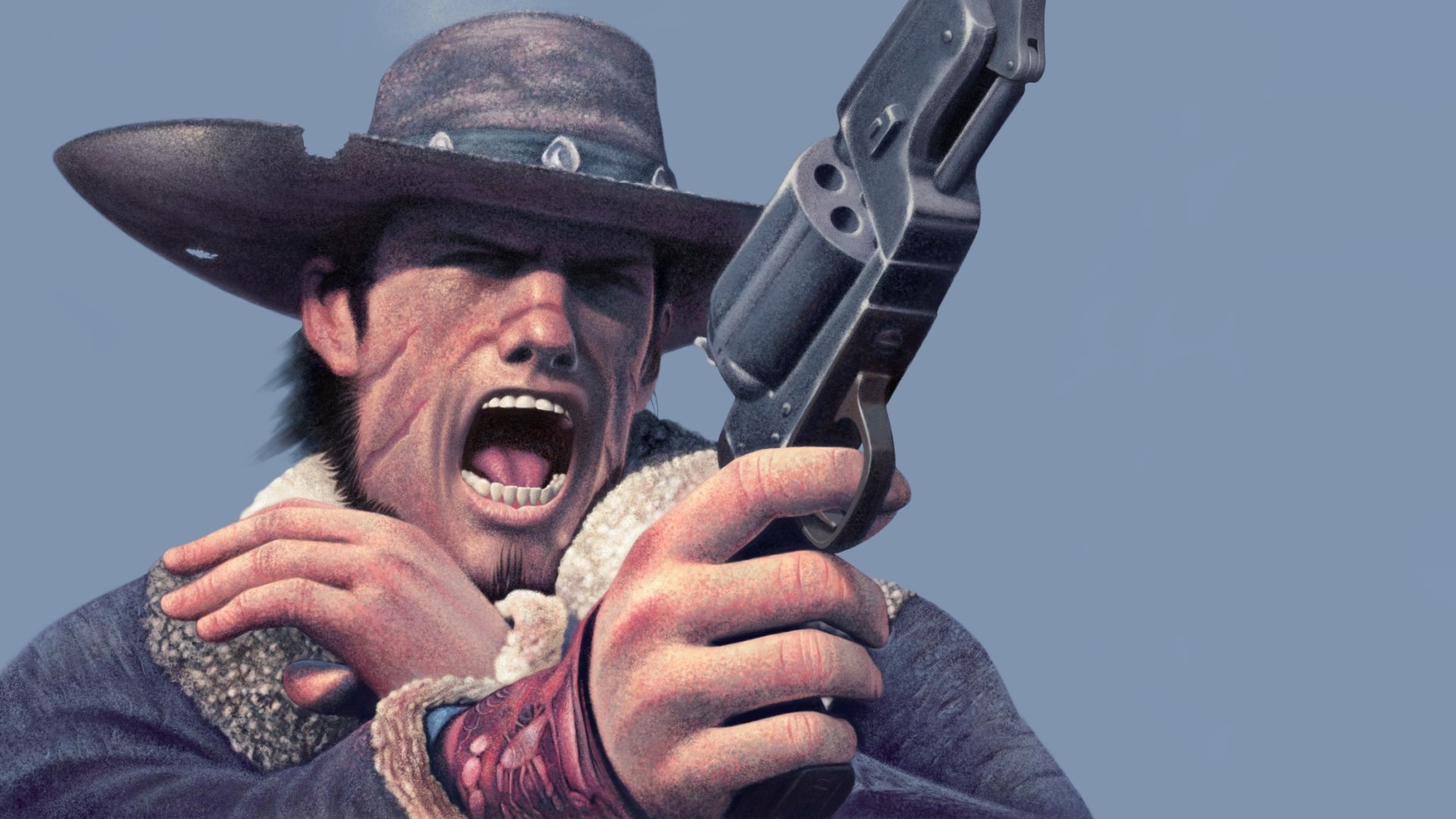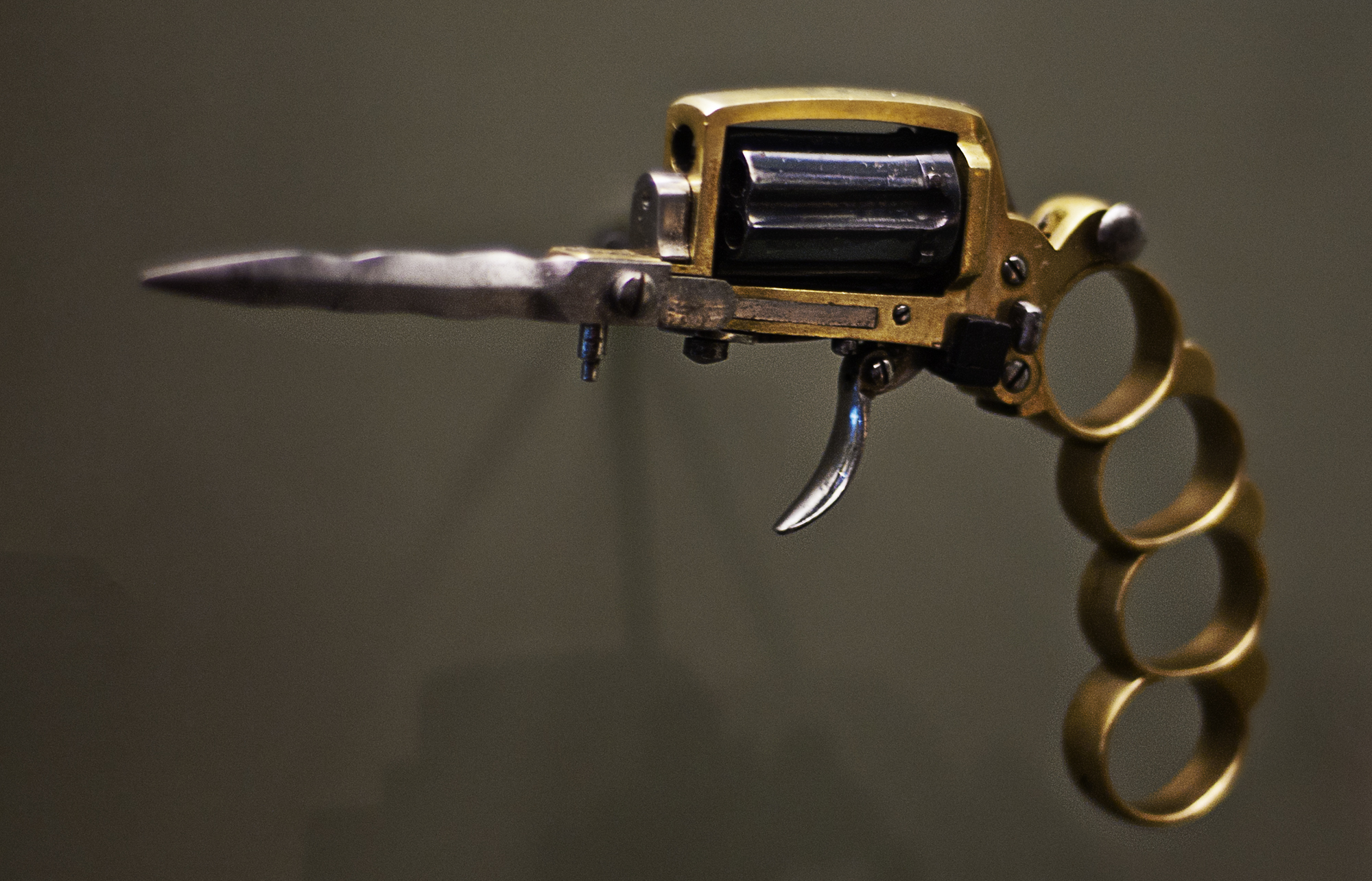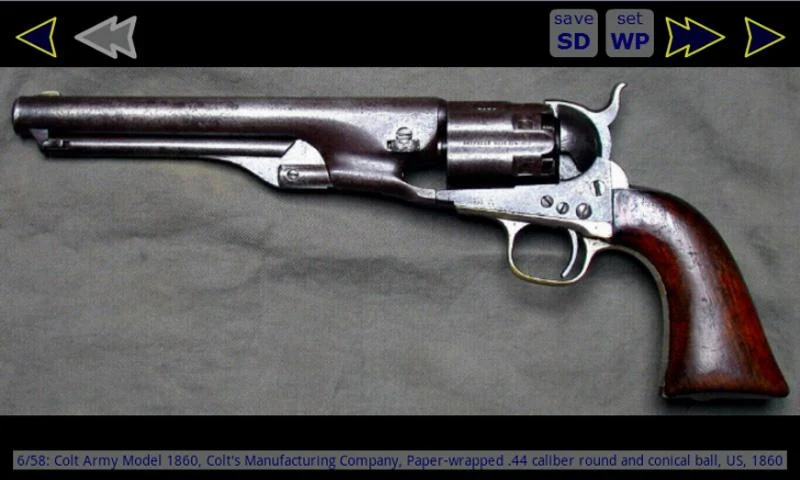HD Wallpaper Of Revolver
A revolver is a repeating firearm that has a revolving cylinder containing multiple chambers and at least one barrel for firing. The term "revolver" refers to a handgun, but other weapons may also have a revolving chamber. These include some models of grenade launchers, shotguns, and rifles.
Though the original name was "revolving gun", the short-hand "revolver" is universally used. (Cannons using this mechanism are known as revolver cannons.) Nearly all early revolvers and many modern ones have six chambers in the cylinder, giving rise to the slang term "six-shooter"; however, revolvers with 3 to 24 chambers have been made, with most modern revolvers having 5 or 6 chambers.
The revolver allows the user to fire multiple rounds without reloading. Each time the user cocks the hammer, the cylinder revolves to align the next chamber and round with the hammer and barrel, which gives this type of firearm its name. In a single-action revolver, the user pulls the hammer back with his free hand or thumb; the trigger pull only releases the hammer. In a double-action revolver, pulling the trigger moves the hammer back, then releases it.
The first guns with multichambered cylinders that revolved to feed one barrel were made in the late 1500s in Europe. They were expensive and rare curiosities. Not until the 1800s would revolvers become practical weapons for non-rich owners. One of the first was a flintlock revolver made by Elisha Collier in 1814. The first percussion cap revolver was invented by the Italian Francesco Antonio Broccu 1833. He received a prize of 300 francs for his invention, although he didn't patent it, his revolver was shown to the King Charles Albert of Sardinia. However, in 1835 a similar gun was patented by Samuel Colt. The first cartridge revolvers were produced around 1856 by Smith & Wesson.[1]
Revolver handguns soon became standard for nearly all uses. In the early 20th century, semi-automatic pistols were developed, which can hold more rounds, and are faster to reload. "Automatic" pistols also have a flat profile, more suitable for concealed carry. Semi-auto pistols were not considered reliable enough for serious police work or self defense until the later half of the century, however, and revolvers were the dominant handgun for police and civilians until modern pistols such as the Beretta 92 and Glock 17 were developed in the 70s and 80s. Automatic pistols have almost completely replaced revolvers in military and law enforcement use (in military use, from 1910-1960; in law enforcement, in the 1980s and 1990s).
Revolvers still remain popular as back-up and off-duty guns among American law enforcement officers and security guards. Also, revolvers are still common in the American private sector as defensive and sporting/hunting firearms. Famous police and military revolvers include the Webley, the Colt Single Action Army, the Colt Police Special, the Smith & Wesson Model 36, the Smith & Wesson Model 10, the Smith & Wesson 1917 and the Nagant M1895.







A revolver is a repeating firearm that has a revolving cylinder containing multiple chambers and at least one barrel for firing. The term "revolver" refers to a handgun, but other weapons may also have a revolving chamber. These include some models of grenade launchers, shotguns, and rifles.
Though the original name was "revolving gun", the short-hand "revolver" is universally used. (Cannons using this mechanism are known as revolver cannons.) Nearly all early revolvers and many modern ones have six chambers in the cylinder, giving rise to the slang term "six-shooter"; however, revolvers with 3 to 24 chambers have been made, with most modern revolvers having 5 or 6 chambers.
The revolver allows the user to fire multiple rounds without reloading. Each time the user cocks the hammer, the cylinder revolves to align the next chamber and round with the hammer and barrel, which gives this type of firearm its name. In a single-action revolver, the user pulls the hammer back with his free hand or thumb; the trigger pull only releases the hammer. In a double-action revolver, pulling the trigger moves the hammer back, then releases it.
The first guns with multichambered cylinders that revolved to feed one barrel were made in the late 1500s in Europe. They were expensive and rare curiosities. Not until the 1800s would revolvers become practical weapons for non-rich owners. One of the first was a flintlock revolver made by Elisha Collier in 1814. The first percussion cap revolver was invented by the Italian Francesco Antonio Broccu 1833. He received a prize of 300 francs for his invention, although he didn't patent it, his revolver was shown to the King Charles Albert of Sardinia. However, in 1835 a similar gun was patented by Samuel Colt. The first cartridge revolvers were produced around 1856 by Smith & Wesson.[1]
Revolver handguns soon became standard for nearly all uses. In the early 20th century, semi-automatic pistols were developed, which can hold more rounds, and are faster to reload. "Automatic" pistols also have a flat profile, more suitable for concealed carry. Semi-auto pistols were not considered reliable enough for serious police work or self defense until the later half of the century, however, and revolvers were the dominant handgun for police and civilians until modern pistols such as the Beretta 92 and Glock 17 were developed in the 70s and 80s. Automatic pistols have almost completely replaced revolvers in military and law enforcement use (in military use, from 1910-1960; in law enforcement, in the 1980s and 1990s).
Revolvers still remain popular as back-up and off-duty guns among American law enforcement officers and security guards. Also, revolvers are still common in the American private sector as defensive and sporting/hunting firearms. Famous police and military revolvers include the Webley, the Colt Single Action Army, the Colt Police Special, the Smith & Wesson Model 36, the Smith & Wesson Model 10, the Smith & Wesson 1917 and the Nagant M1895.






No comments:
Post a Comment